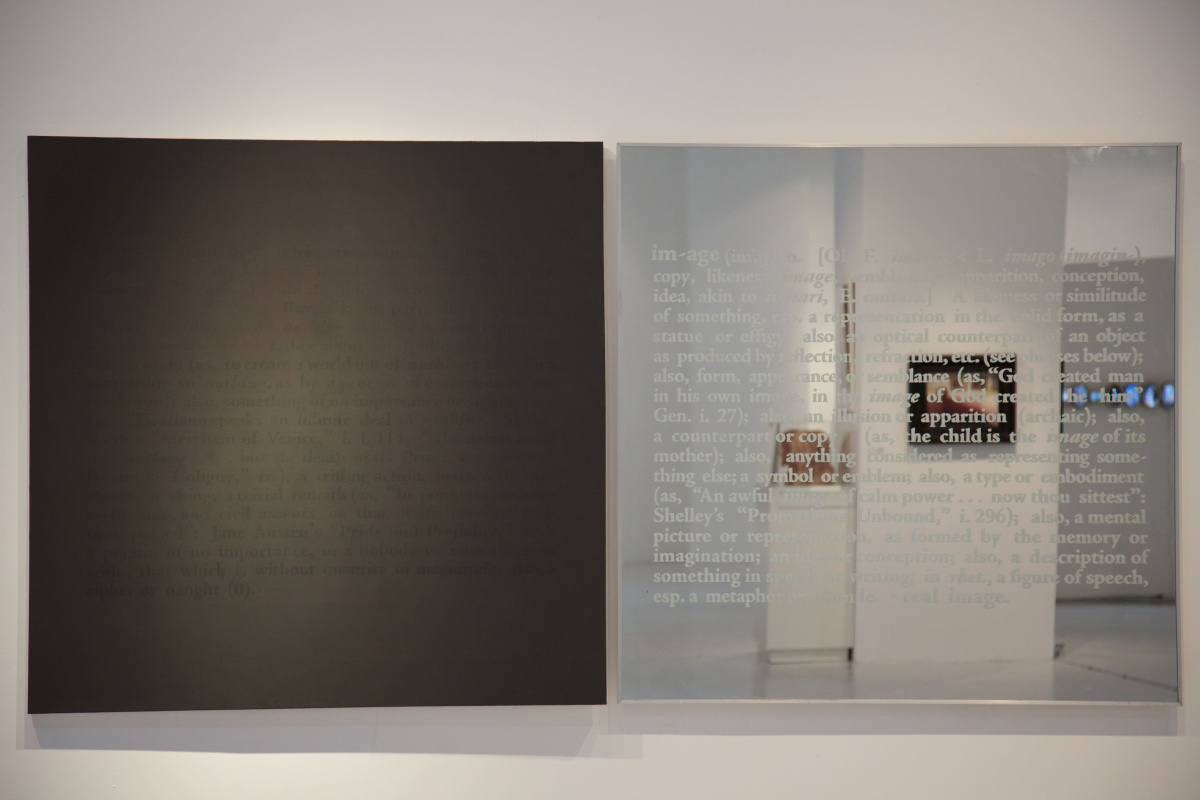Nothing and Image (After Kosuth), (Diptych)
Annie Cabigting
Oil on canvas, glass mirror with etching - 2012
2 panels, 137 cm x 137 cm x 5cm each

Annie Cabigting pays homage to conceptual artist Joseph Kosuth in her diptych, Nothing and Image (After Kosuth), (2012). Regarded as one of the pioneers of Conceptual art in America in the mid-1960s and 1970s, Kosuth is concerned with the relationship between images and language. His seminal work, One and Three Chairs, (1965), juxtaposes a wooden chair with a photograph of a chair and an enlarged dictionary entry for the word chair. Kosuth proposes that all three are registers of the same object on different levels. His conceptual explorations on the nature of art are grounded on the fundamental idea that language shapes the way we make sense of our experience of art and the world.
Appropriating Kosuth’s use of text, the left panel in Cabigting’s work is a painting of the dictionary definition of nothing that seems to fade into its black background, while the right panel is a mirror etched with the dictionary definition of image. In her juxtaposition of painting and object, Cabigting engages with key movements in western art history, recalling the visual language of Kazemir Malevich’s iconic painting The Black Square, (1915) which marked the break from representational painting to abstract painting, appropriating the use of industrial materials and the blurring of distinctions between painting and sculpture espoused by the Minimalist movement, and adopting the use of language and text in Conceptual art. The inescapable reflection of the viewer on the mirror likewise reiterates the meaning of the text etched on its surface, while making visible the process of reception, which is a recurring theme in Cabigting’s artistic practice.

Subscribe and Stay Updated with us!
If you like to stay updated on the latest news about the collection, please enter your emai.
